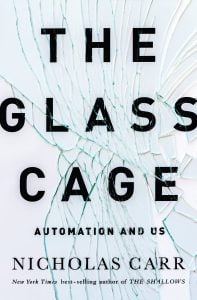How the CIA made Google… and WHY
Two articles from Medium by ‘Insurge Intelligence,’ a crowd-funded investigative journalism project, tell the story of how the United States intelligence community funded, nurtured and incubated Google as part of a drive to dominate the world through control of information. Seed-funded by the NSA and CIA, Google was merely the first among a plethora of private sector start-ups co-opted by US intelligence to retain ‘information superiority.’
By Nafeez Ahmed.
Part One: How the CIA made Google
“From inception, in other words, Google was incubated, nurtured and financed by interests that were directly affiliated or closely aligned with the US military intelligence community: many of whom were embedded in the Pentagon Highlands Forum.
The US intelligence community’s incubation of Google from inception occurred through a combination of direct sponsorship and informal networks of financial influence, themselves closely aligned with Pentagon interests.
The Highlands Forum itself has used the informal relationship building of such private networks to bring together defense and industry sectors, enabling the fusion of corporate and military interests in expanding the covert surveillance apparatus in the name of national security. The power wielded by the shadow network represented in the Forum can, however, be gauged most clearly from its impact during the Bush administration, when it played a direct role in literally writing the strategies and doctrines behind US efforts to achieve ‘information superiority.’”
Noting Google’s genesis with DARPA funding, the expansion of the empire today in the realm of Google’s actions with GeoEye and Keyhole; Boston Dynamics, DeepMind, Nest Labs, Dropcam, etc—the trajectory becomes clear.
Part Two: Why Google made the NSA
“Mass surveillance is about control. It’s promulgators may well claim, and even believe, that it is about control for the greater good, a control that is needed to keep a cap on disorder, to be fully vigilant to the next threat. But in a context of rampant political corruption, widening economic inequalities, and escalating resource stress due to climate change and energy volatility, mass surveillance can become a tool of power to merely perpetuate itself, at the public’s expense.
A major function of mass surveillance that is often overlooked is that of knowing the adversary to such an extent that they can be manipulated into defeat. The problem is that the adversary is not just terrorists. It’s you and me. To this day, the role of information warfare as propaganda has been in full swing, though systematically ignored by much of the media.
Here, INSURGE INTELLIGENCE exposes how the Pentagon Highlands Forum’s co-optation of tech giants like Google to pursue mass surveillance, has played a key role in secret efforts to manipulate the media as part of an information war against the American government, the American people, and the rest of the world: to justify endless war, and ceaseless military expansionism.”

 In The Glass Cage, Pulitzer Prize nominee and bestselling author Nicholas Carr shows how the most important decisions of our lives are now being made by machines and the radical effect this is having on our ability to learn and solve problems.
In The Glass Cage, Pulitzer Prize nominee and bestselling author Nicholas Carr shows how the most important decisions of our lives are now being made by machines and the radical effect this is having on our ability to learn and solve problems.